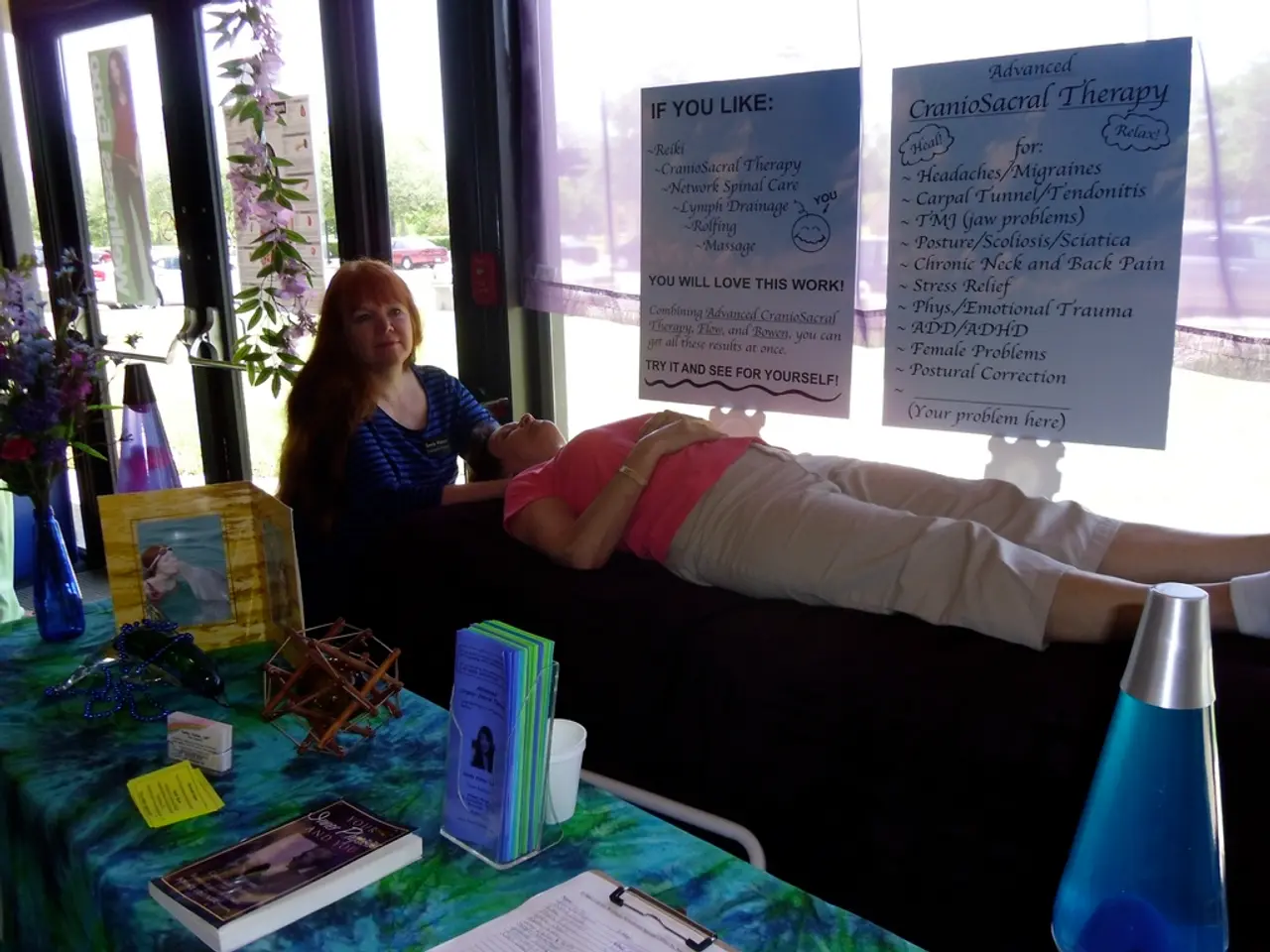Options for removing warts, both over-the-counter and surgical, as well as other methods available.
Warts, small, rough skin growths caused by the human papillomavirus (HPV), can be a nuisance for many individuals. Fortunately, a variety of treatment options are available, each with its own effectiveness, side effects, and use cases.
For over-the-counter (OTC) treatments, topical solutions containing salicylic acid are a common first-line therapy. These products gradually peel wart layers over weeks, showing moderate to high effectiveness. However, they may take several weeks to work fully and could potentially cause mild irritation.
When OTC treatments prove ineffective, people may need to see their doctor for medical or surgical treatment. Professional intervention is generally preferred for complete removal with minimal recurrence.
One widely used and effective method is cryotherapy, which involves freezing the wart tissue to cause cell death. This process often requires multiple treatments and can cause pain, blistering, and sometimes scarring.
Electrosurgery and curettage, another treatment option, involve burning the wart with electric current and scraping it off. These methods may require local anesthesia and have a risk of scarring, but they offer precision and are effective for resistant warts.
NdYAG laser therapy is an advanced option that uses focused laser energy to destroy wart tissue and its blood supply. It offers precision with less damage to surrounding skin, minimal pain, and a lower recurrence rate. Patients often resume activities immediately, and scarring risk is reduced compared to surgery or cryotherapy.
Immunotherapy approaches, such as dinitrochlorobenzene (DNCB), trigger an immune response to clear warts. This method has about an 80% cure rate but must be administered cautiously by physicians due to side effects and risks.
Bleomycin, an injectable chemotherapeutic agent, can be used to treat stubborn warts by killing affected cells. However, it is generally reserved for difficult cases due to potential toxicity, especially when used on fingers, which could lead to nail loss.
Cantharidin, a blistering agent applied topically by healthcare providers, causes the wart to blister and separate from the skin. It is effective, especially in children and can be painless during application but requires professional use.
Prevention tips for HPV and warts include avoiding touching warts, sharing personal items, and biting nails; covering cuts or broken skin; preventing dry or cracked skin; washing hands frequently; wearing footwear in wet, warm areas; treating hyperhidrosis; and getting the HPV vaccine. Warts may spread between individuals, so it's essential to practice good hygiene and seek professional help when necessary.
In summary, the choice of wart removal treatment depends on wart type, location, patient age, and previous treatment response. Cryotherapy, electrosurgery/curettage, and laser therapy (like NdYAG) are among the most effective procedural methods, while topical salicylic acid and immunotherapies offer noninvasive options. It's always best to consult a healthcare professional for personalised treatment advice.
[1]: Source 1 [2]: Source 2 [3]: Source 3 [4]: Source 4
- Atopic dermatitis, a type of eczema, often co-exists with various health issues such as asthma and hay fever.
- HPV is linked not only to warts but also to conditions like cervical cancer, making regular check-ups and health screenings important for sexual health.
- According to a recent study published in science journal AQ, there's a possible association between obesity and the risk of developing spondylitis or ankylosing spondylitis.
- Depression, a common mental health concern, can sometimes be a symptom of underlying medical conditions like atopic dermatitis or migraine.
- In the realm of health-and-wellness advertising, DNCB, although effective in treating warts, has been used misleadingly to promote 'miracle' skin-care products.
- The HPV vaccine can help predict and prevent the occurrence of some HPV-related cancers, reinforcing the importance of vaccination in overall health.
- A Q-switched NdYAG laser is commonly found in dermatology clinics for removing skin imperfections such as tattoos, scars, and warts due to its precision and minimal side effects.
- Obsessive-compulsive disorder (OCD), manifesting as excessive cleaning or sanitizing, can be exacerbated by an fear of contamination from skin growths like warts.
- Certain health-and-wellness apps offer predictive analysis features for assessing risk factors of various diseases, including obesity and atopic dermatitis, based on the user's lifestyle and health data.




